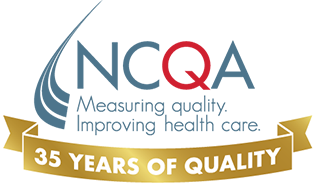No. A fill date from the previous measurement year is not included in current measurement year calculations. The text on page 180 of the MY 2011 P4P publication, under Index prescription date (IPD), should read [the IPD is the] first fill date during the measurement year. The member in your example is ineligible because the first fill date does not occur in the current measurement year.
FAQ Directory
Here are some of the most frequently asked questions about NCQA’s various programs. If you don’t see what you are looking for in one of the entries below, you can ask a question through My NCQA.
Filter Results
- Save
Save your favorite pages and receive notifications whenever they’re updated.
You will be prompted to log in to your NCQA account.
Save your favorite pages and receive notifications whenever they’re updated.
You will be prompted to log in to your NCQA account.
- Email
Share this page with a friend or colleague by Email.
We do not share your information with third parties.
Share this page with a friend or colleague by Email.
We do not share your information with third parties.
- Print
Print this page.
Print this page.
5.16.2012 Proportion of Days Covered by Medications (PDC) For the PDC measure, if a 30 day prescription is filled before the start of the measurement year but spills over into the current measurement year, how is it counted? For example, if a member fills a 30-day prescription on 12/15/10, does it count for MY 2011, for the 15 days that the prescription lasts into MY 2011?
5.15.2012 Verification of certification for an unrecognized board Does NCQA only accept ABMS and AOA sponsored boards as verification sources? What does NCQA require for verification of boards from non-ABMS or non-AOA boards if the practitioner claims to be board certified?
No. With the exception of ABMS or AOA sponsored boards, NCQA requires organizations to determine and list specialty boards they accept within their credentialing policies and procedures. At a minimum, at least annually, organizations must obtain written confirmation from the specialty board that it performs primary-source verification of education and training. A specialty board that provides annual written confirmation that it conducts primary source verification of education and training can be used as an acceptable source for verification of education and training if the organization names the specialty board in its policies and procedures.
The organization must verify board certification status for any practitioner claiming to be certified by an ABMS or AOA sponsored boards, or by a specialty board recognized by the organization.
5.15.2012 Appropriate form of "written acknowledgement" Is e-mail correspondence between the health plan and an NCQA-certified organization acceptable as "written acknowledgment" when a formal delegation agreement is not necessary?
5.15.2012 Clinical quality measures across programs May organizations use the same clinical quality measure for each program brought forward for accreditation?
5.15.2012 Appeal notices in a culturally and linguistically appropriate manner What does NCQA look for in an appeal notification that meets the "culturally and linguistically appropriate manner" requirement?
5.15.2012 Remove notice of new appeal reviewer from the denial letter For UM 7, Elements D and G, factor 2, must the explanation of the appeal process include notice that a new, nonsubordinate reviewer will be appointed?
No. The denial notice does not need to include notification that a new, nonsubordinate reviewer will be appointed; however, the organization must include this requirement in its appeal policies and procedures to meet UM 8, Elements B and C, factor 5, and include it in applicable appeal files to meet UM 9, Element C.
5.15.2012 Collecting feedback from program participants Is an organization required to collect feedback from all programs and all program participants, or may the organization choose from whom to collect feedback?
Organizations must include all programs or population segments to assess for WHP 9, Element A.
Data collection must be across all programs and include eligible participants. If an organization uses a sample, the sample must be randomized to give all eligible participants an equal chance of being included.
5.15.2012 Bylaws in place of Credentialing Policies and Procedures May a hospital's by-laws serve as credentialing policies and procedures?
5.15.2012 Verification of certification for an unrecognized board Does NCQA only accept ABMS and AOA sponsored boards as verification sources? What does NCQA require for verification of boards from non-ABMS or non-AOA boards if the practitioner claims to be board certified?
No. With the exception of ABMS or AOA sponsored boards, NCQA requires organizations to determine and list specialty boards they accept within their credentialing policies and procedures. At a minimum, at least annually, organizations must obtain written confirmation from the specialty board that it performs primary-source verification of education and training. A specialty board that provides annual written confirmation that it conducts primary source verification of education and training can be used as an acceptable source for verification of education and training if the organization names the specialty board in its policies and procedures.
4.16.2012 Meaningful Use of Health Information Technology (MUHIT) In the November 2011 release of the MY2011 P4P Manual, the examples for scoring of the MUHIT domain in the Description and Domain Structure sections (pp 114 and 115) seem to have incorrect calculations. Is this an error?
Yes. The example on page 114 should read as follows:
100 out of 100 PCPs meet the criteria = 100%
_ 5 points for certified and 3.75 for non-certified
25 of 100 certified = ((25% * 5) = 1.25)
75 of 100 non-certified = ((75% * 3.75) = 2.81)
Total points = ((1.25+ 2.81) = 4.06)
The example on page 115, in the Point allocation for POs using ONC-ATCB certified software section, should read as follows:
For example, if a PO earned 60 points, its overall calculated P4P score would be 18. Scores are rounded to the nearest whole number.
These errors will be corrected in the September 2012 release of the MY 2012 manual.
